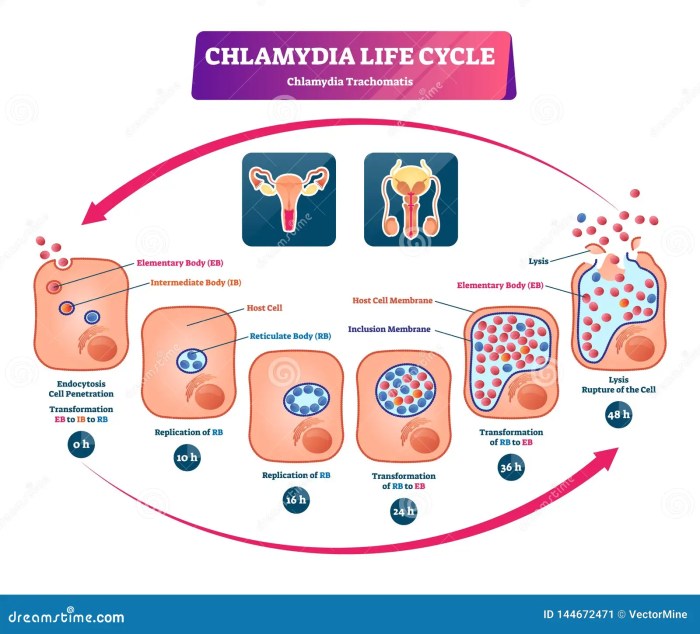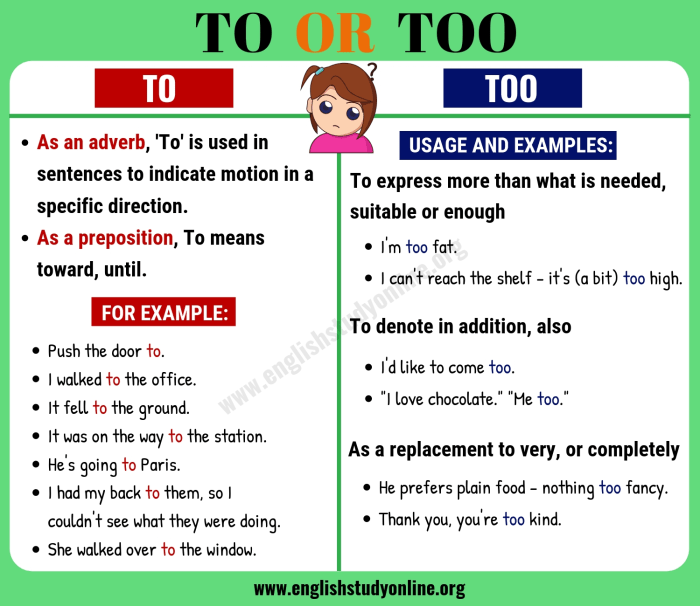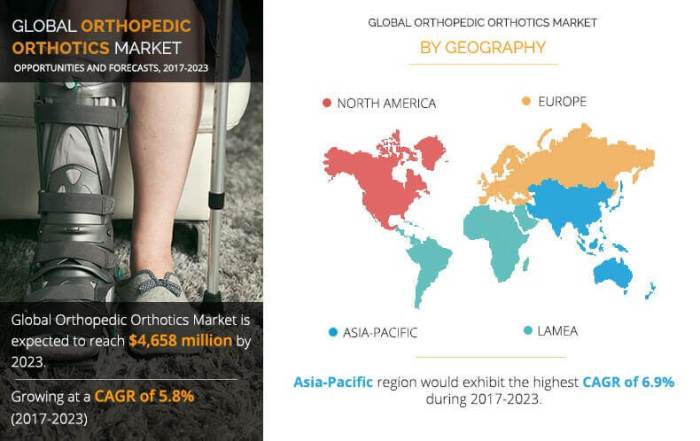Fall produce for heart health offers a delicious and nutritious way to support cardiovascular well-being. From the vibrant colors of autumn to the bounty of fresh ingredients, this guide explores the key nutrients in fall produce and how to incorporate them into your daily meals for a healthier heart. We’ll delve into specific produce like apples, sweet potatoes, and pumpkins, uncover their heart-healthy properties, and share delicious recipes to make the most of this seasonal goodness.
This guide delves into the nutritional value of fall produce, offering practical advice on incorporating it into your diet. We’ll explore the benefits of these seasonal favorites, discussing their role in preventing cardiovascular issues. Learn how to prepare these produce items to maximize their nutritional value and discover how a heart-healthy diet, featuring fall produce, can contribute to a healthier lifestyle.
Introduction to Fall Produce for Heart Health

Fall brings a bounty of vibrant and flavorful produce, offering a delicious and nutritious way to support a healthy heart. These seasonal fruits and vegetables are packed with essential vitamins, minerals, and antioxidants that contribute to overall cardiovascular well-being. Incorporating fall produce into your diet can be a simple yet powerful step towards a healthier heart.Fall produce, rich in beneficial nutrients, plays a crucial role in maintaining optimal heart health.
These nutrient-dense foods provide the body with the building blocks it needs to support healthy blood pressure, cholesterol levels, and overall cardiovascular function. The antioxidants and fiber found in abundance in these seasonal crops contribute significantly to a healthy heart.
Key Nutrients in Fall Produce for Heart Health
Fall produce boasts a wealth of essential nutrients crucial for cardiovascular health. These nutrients include vitamins, minerals, and antioxidants, each playing a specific role in supporting a healthy heart.
- Potassium: Potassium helps regulate blood pressure, a critical factor in preventing heart disease. Many fall vegetables, such as sweet potatoes and squash, are excellent sources of potassium.
- Fiber: Dietary fiber aids in lowering cholesterol levels, promoting healthy digestion, and contributing to a feeling of fullness. Apples, pears, and root vegetables like carrots and beets are good sources of fiber.
- Antioxidants: Antioxidants combat oxidative stress, a process linked to heart disease. Berries, such as blueberries and cranberries, and some fall squashes are rich in antioxidants.
- Vitamins and Minerals: Vitamins and minerals like vitamin C, vitamin K, and magnesium support various bodily functions, including healthy blood vessels and blood clotting, contributing to heart health.
Incorporating Fall Produce into Daily Meals and Snacks
Fall produce can be easily integrated into daily meals and snacks, enhancing flavor and nutrition.
- Breakfast: Enjoy a smoothie with berries, spinach, and pumpkin seeds. Roasted butternut squash and apple slices can be a healthy and flavorful addition to breakfast cereal.
- Lunch: Include roasted sweet potatoes, carrots, and bell peppers in your salads or sandwiches. A hearty soup with pumpkin or butternut squash can be a filling and nutritious lunch option.
- Dinner: Add seasonal squash or apples to your main dishes. Use sweet potatoes as a side dish or as a replacement for rice or potatoes. Roast vegetables like Brussels sprouts and broccoli as a delicious side.
- Snacks: Snack on apple slices with almond butter, or a handful of pumpkin seeds. A small portion of roasted root vegetables can also be a satisfying and healthy snack.
Infographic: Key Benefits of Fall Produce for Heart Health
| Fall Produce | Key Benefits |
|---|---|
| Apples, Pears | High in fiber, antioxidants, and vitamins. Support healthy cholesterol levels. |
| Sweet Potatoes, Squash | Excellent source of potassium, promoting healthy blood pressure regulation. |
| Berries (Blueberries, Cranberries) | Rich in antioxidants, protecting against oxidative stress, contributing to a healthier heart. |
| Root Vegetables (Carrots, Beets) | Good source of fiber, promoting healthy digestion and lowering cholesterol. |
| Brussels Sprouts, Broccoli | Contain essential vitamins and minerals for overall cardiovascular health. |
Specific Fall Produce and Their Heart Health Benefits
Fall brings a bounty of delicious and nutritious produce, perfectly suited for supporting a healthy heart. From the crisp sweetness of apples to the earthy goodness of sweet potatoes and pumpkins, these seasonal favorites offer a wealth of vitamins, minerals, and fiber that contribute to cardiovascular well-being. Let’s delve into the specific heart-healthy properties of these popular fall treats.
Nutritional Value of Apples
Apples are a versatile and popular fall fruit. They are a good source of dietary fiber, which promotes healthy digestion and can help regulate blood sugar levels, both beneficial for heart health. Apples also contain antioxidants, such as flavonoids, which may help protect against cell damage. A medium-sized apple (about 180g) provides approximately 95 calories and a significant amount of fiber.
Furthermore, they are low in calories and fat, making them a healthy addition to a heart-conscious diet.
Nutritional Value of Sweet Potatoes
Sweet potatoes are a vibrant root vegetable packed with nutrients that support heart health. They are a fantastic source of vitamin A, vitamin C, and potassium, all essential for maintaining healthy blood pressure. Sweet potatoes also contain a good amount of fiber, which, as mentioned earlier, is crucial for digestion and blood sugar control. A medium-sized sweet potato (about 150g) typically provides about 110 calories and offers a substantial amount of vitamin A.
Nutritional Value of Pumpkins
Pumpkins, another fall staple, offer a variety of nutrients that can benefit heart health. They are an excellent source of fiber, promoting healthy digestion and aiding in cholesterol management. Pumpkins also contain vitamin A, which is crucial for maintaining healthy cell function and may help protect against cardiovascular disease. Furthermore, pumpkins are rich in potassium, which is essential for regulating blood pressure.
A cup of pumpkin puree (about 200g) contains roughly 80 calories and is a source of essential vitamins and minerals.
Comparison of Nutritional Profiles
Different types of fall produce offer a diverse range of nutrients. Apples are particularly rich in fiber and antioxidants, while sweet potatoes excel in vitamin A and potassium. Pumpkins offer a blend of fiber and vitamins. This diversity allows individuals to incorporate various fall produce into their diets to optimize their intake of beneficial nutrients.
Specific Nutrients and Their Impact on Heart Health, Fall produce for heart health
Fiber in fall produce helps regulate cholesterol levels and promotes healthy digestion, reducing the risk of cardiovascular diseases. Potassium aids in maintaining healthy blood pressure, a critical factor in preventing heart problems. Antioxidants like flavonoids, present in apples, protect against cell damage, reducing the risk of heart disease.
Potential Health Risks of Excessive Consumption
While fall produce offers numerous heart-health benefits, consuming excessive amounts can also pose potential risks. For instance, excessive consumption of sweet potatoes or other starchy vegetables could lead to an increase in blood sugar levels in individuals with diabetes. Sugar content in certain varieties of pumpkins should also be considered. It is essential to maintain a balanced diet and consume fall produce in moderation as part of an overall healthy lifestyle.
| Produce | Calories (approx.) | Fiber (approx.) | Potassium (approx.) | Vitamin A (approx.) | Heart Health Benefits |
|---|---|---|---|---|---|
| Apples (medium) | 95 | 4g | 100mg | 100mcg | Fiber, antioxidants, regulates blood sugar |
| Sweet Potatoes (medium) | 110 | 6g | 450mg | 600mcg | Vitamin A, potassium, fiber |
| Pumpkin (1 cup puree) | 80 | 2g | 200mg | 200mcg | Fiber, vitamins, potassium |
Recipes and Meal Ideas Featuring Fall Produce
Fall brings a bounty of vibrant and flavorful produce, perfect for delicious and heart-healthy meals. These seasonal fruits and vegetables offer a wealth of vitamins, minerals, and antioxidants that contribute to a healthy cardiovascular system. From hearty stews to refreshing salads, incorporating fall produce into your diet can be both enjoyable and beneficial.This section explores diverse recipes and meal ideas that utilize fall produce to create nutritious and flavorful dishes, while emphasizing preparation methods to maximize nutritional value.
We’ll delve into how to incorporate these seasonal delights into breakfast, lunch, and dinner menus, and also provide simple snack options to support heart health.
Breakfast Dishes with Fall Produce
A delicious and nutritious way to start your day is by incorporating fall produce into your breakfast routine. These dishes offer a combination of flavors and textures, providing essential nutrients for a healthy heart.
- Pumpkin Spice Oatmeal: This classic breakfast dish can be easily customized with seasonal ingredients. Combine rolled oats with pumpkin puree, cinnamon, nutmeg, and a touch of ginger for a warm and comforting breakfast. Top with chopped pecans or walnuts for added fiber and healthy fats.
- Apple and Cinnamon Pancakes: Apples and cinnamon are a delightful combination that adds warmth and flavor to pancakes. Thinly sliced apples, sautéed with cinnamon and a touch of nutmeg, can be folded into the batter or served on the side. Pair with a side of berries for added antioxidants.
Lunchtime Salads Featuring Fall Produce
Fall produce shines in vibrant salads, offering a refreshing and nutritious lunch option. Preparing salads with the right techniques ensures optimal nutritional value and flavor.
- Roasted Butternut Squash and Apple Salad: Roasted butternut squash and thinly sliced apples provide a sweet and savory combination. Add crumbled feta cheese for a touch of saltiness and a drizzle of olive oil for healthy fats. Toss with mixed greens for a complete and balanced lunch.
- Sweet Potato and Kale Salad with Cranberries: Sweet potatoes offer a hearty and satisfying element, while kale provides fiber and vitamins. Toss with dried cranberries for sweetness and walnuts for healthy fats. A light vinaigrette dressing complements the flavors.
Hearty Dinner Options with Fall Produce
Fall’s hearty vegetables lend themselves beautifully to delicious and satisfying dinner meals. The recipes below highlight the versatility of fall produce.
Fall produce is fantastic for heart health, packed with vitamins and antioxidants. While focusing on heart health, it’s important to remember that eye health is equally crucial. Recent breakthroughs in macular degeneration treatments, like those detailed in this article on macular degeneration emerging treatments , are promising. Ultimately, incorporating fall produce into your diet can support both your heart and eyes, making it a win-win for overall well-being.
- Roasted Root Vegetable Medley with Herbs: A medley of root vegetables like carrots, parsnips, and sweet potatoes, roasted with aromatic herbs like rosemary and thyme, is a flavorful and healthy main course. Serve with a side of quinoa for added protein and fiber.
- Lentil Soup with Pumpkin and Sage: A hearty lentil soup with the addition of pumpkin puree and fresh sage is a comforting and nutritious option. This soup provides a good source of protein and fiber. Serve with a side of whole-wheat bread for a complete meal.
Simple Fall Produce Snacks for Heart Health
These easy-to-make snacks can be incorporated into your daily routine to provide a healthy and satisfying treat.
- Apple slices with almond butter: A simple yet nutritious snack. Apples are a good source of fiber, while almond butter provides healthy fats. This combination is a great source of energy.
- Roasted pumpkin seeds: Pumpkin seeds are packed with nutrients and are a great source of magnesium and zinc. Roasting them brings out their flavor and adds a satisfying crunch.
Preparing Fall Produce for Maximum Nutritional Value
Proper preparation methods can significantly impact the nutritional value and taste of fall produce.
“Steaming or lightly sautéing vegetables preserves more nutrients than boiling or frying.”
- Steaming: Steaming is a gentle cooking method that retains the majority of nutrients and natural flavors. This method is ideal for leafy greens and vegetables that are easily overcooked.
- Roasting: Roasting vegetables brings out their natural sweetness and creates a delicious crispy texture. Add herbs and spices to enhance the flavor.
Fall Produce and Other Heart-Healthy Dietary Considerations: Fall Produce For Heart Health
Fall produce offers a delicious and nutritious way to support heart health. Beyond simply incorporating these seasonal favorites into your diet, however, a holistic approach to eating is crucial for optimal cardiovascular well-being. This means considering not only the produce itself but also other essential dietary elements.A balanced diet is the cornerstone of a healthy heart. It’s not just about consuming specific foods, but about creating a well-rounded nutritional profile that provides the body with the essential vitamins, minerals, and fiber necessary for proper function.
This encompasses a variety of food groups, including lean proteins, whole grains, and healthy fats, alongside the colorful and flavorful additions of fall produce.
Balanced Diet for Optimal Heart Health
A balanced diet for heart health emphasizes variety and moderation. It includes a range of fruits, vegetables, whole grains, lean proteins, and healthy fats. This variety ensures that the body receives a complete spectrum of nutrients vital for cardiovascular function. A balanced diet helps regulate blood pressure, cholesterol levels, and blood sugar, all of which are critical for preventing heart disease.
Portion Control with Fall Produce
Portion control is a crucial aspect of incorporating fall produce into a heart-healthy diet. While fall produce is generally low in calories and high in nutrients, consuming excessive portions can still contribute to unwanted weight gain. Understanding appropriate portion sizes helps you enjoy the benefits of these seasonal foods without exceeding your calorie needs.
Healthy Cooking Methods for Fall Produce
Choosing the right cooking method can significantly impact the nutritional value of fall produce. Certain methods preserve more nutrients than others. For example, steaming and roasting are often preferred over frying or boiling due to their ability to retain more vitamins and minerals.
Limiting Sodium and Saturated Fat
Excessive sodium and saturated fat intake can negatively impact heart health. High sodium intake can lead to increased blood pressure, while saturated fat can contribute to high cholesterol levels. Limiting these elements in your diet is important for maintaining a healthy cardiovascular system. Reading food labels carefully and choosing low-sodium options are effective strategies.
Nutritional Value Comparison of Cooking Methods
Different cooking methods affect the nutritional value of fall produce. Steaming and roasting often retain more nutrients than boiling or frying. This is due to the lower temperatures and reduced exposure to water, which can leach out vitamins and minerals. A key consideration when planning meals is to select the method that best preserves the nutritional benefits of the fall produce.
| Cooking Method | Impact on Nutrient Retention |
|---|---|
| Steaming | Excellent; minimal nutrient loss |
| Roasting | Good; some nutrient loss depending on the duration and temperature |
| Boiling | Moderate; some nutrient loss due to leaching |
| Frying | Poor; significant nutrient loss due to high heat and oil absorption |
Fall Produce and Cardiovascular Disease Prevention
Fall brings a bounty of delicious and nutritious produce, and incorporating these seasonal favorites into your diet can significantly contribute to cardiovascular health. A diet rich in fruits, vegetables, and whole grains plays a crucial role in reducing the risk of heart disease. These foods provide essential vitamins, minerals, and fiber that support healthy blood pressure, cholesterol levels, and overall heart function.The connection between diet and cardiovascular disease is well-established.
High saturated and trans fats, excessive sodium intake, and a lack of fruits, vegetables, and fiber can contribute to the development of conditions like high blood pressure, high cholesterol, and ultimately, heart disease. Choosing a heart-healthy diet, incorporating plenty of fall produce, and making conscious lifestyle choices can greatly reduce the risk of these issues.
Fall produce is fantastic for heart health, packed with vitamins and antioxidants. While enjoying those delicious autumn treats, sometimes heartburn can pop up. Fortunately, a quick fix like using baking soda for heartburn can help you enjoy your meals without discomfort. Baking soda for heartburn is a simple, often effective remedy. But don’t let heartburn derail your healthy fall eating habits; focus on incorporating plenty of colorful fruits and vegetables for a heart-healthy autumn.
The Role of Fall Produce in Preventing Cardiovascular Issues
Fall produce, with its vibrant colors and diverse nutrients, offers a powerful arsenal against cardiovascular disease. These seasonal fruits and vegetables are packed with antioxidants, vitamins, and minerals, all of which play a vital role in maintaining healthy blood vessels and reducing inflammation. This, in turn, can help prevent the buildup of plaque in the arteries, a key factor in heart disease development.
Fiber’s Impact on Heart Health
Dietary fiber is a cornerstone of a heart-healthy diet, and fall produce offers a considerable source. Soluble fiber, in particular, has been shown to lower LDL (“bad”) cholesterol levels. This is achieved by binding to cholesterol in the digestive tract, preventing its absorption into the bloodstream. Insoluble fiber adds bulk to stool, promoting regular bowel movements and reducing the risk of digestive issues.
Fall produce is fantastic for heart health, packed with vitamins and antioxidants. However, it’s crucial to be mindful of how certain foods can impact blood sugar levels, especially if you’re not diabetic. Understanding the causes of blood sugar rise in non-diabetics can help you make informed choices when incorporating these delicious fall treats into your diet. For example, understanding the factors contributing to blood sugar spikes in those without diabetes is key to maximizing the heart-healthy benefits of seasonal produce.
causes blood sugar rise in non diabetics Ultimately, the right approach is to enjoy fall produce in moderation and make healthy choices overall. This balanced approach will continue to support a healthy heart.
Apples, pears, and pumpkins, for example, are rich in both soluble and insoluble fiber. A diet rich in fiber can also help regulate blood sugar levels, a significant factor in cardiovascular health. The presence of fiber in fall produce contributes directly to a healthy cardiovascular system by improving cholesterol and blood sugar management.
Incorporating Fall Produce into a Heart-Healthy Lifestyle
A heart-healthy lifestyle encompasses more than just diet. Regular exercise, stress management, and avoiding smoking are equally important. Fall produce can be easily integrated into a comprehensive heart-healthy lifestyle. For instance, include a variety of fall produce in your daily meals. A hearty soup featuring squash, carrots, and beans can provide a substantial amount of fiber and essential nutrients.
Roasted root vegetables, like sweet potatoes and carrots, make a delicious and nutritious side dish. A simple salad with seasonal greens and berries offers a light and satisfying meal. These are just a few examples of how fall produce can contribute to a balanced and healthy diet.
Fall Produce and a Larger Strategy for Disease Prevention
The importance of fall produce extends beyond its role in preventing cardiovascular disease. Its nutritional value supports overall health and wellness. Fall produce, as part of a broader strategy for disease prevention, helps reduce the risk of various health issues. By incorporating a variety of fall produce into a balanced diet, one can contribute to lowering blood pressure, regulating cholesterol, and reducing the risk of developing chronic diseases.
This holistic approach emphasizes the importance of integrating healthy eating habits into a comprehensive lifestyle.
Visual Representation of Fall Produce Benefits

Fall brings a vibrant array of colorful and nutritious produce, each offering unique health benefits for a heart-healthy lifestyle. From the deep oranges of pumpkins to the rich reds of cranberries, these seasonal delights are more than just beautiful additions to our plates; they are powerful tools in our quest for better cardiovascular health. Understanding their visual attributes, cultural significance, and historical uses deepens our appreciation for their nutritional value and provides further insight into the benefits they offer.
Fall Produce Color Palette
The fall harvest bursts with a spectrum of vibrant colors, reflecting the rich nutrients within. Deep reds, fiery oranges, and rich yellows are not just visually appealing but also signify the presence of antioxidants, carotenoids, and other beneficial compounds. For instance, the deep crimson of pomegranates and the fiery orange of carrots both contribute to heart health by boosting antioxidant levels.
These pigments play a crucial role in protecting cells from damage, thus contributing to overall cardiovascular well-being.
Texture and Shape Diversity
Fall produce showcases a wide range of textures and shapes. From the firm, crisp texture of apples and pears to the smooth, creamy flesh of butternut squash, each variety offers a unique sensory experience. The diverse shapes, from the rounded globes of pumpkins to the elongated stalks of celery, contribute to visual appeal and encourage variety in our meals.
This diversity ensures a balanced intake of different nutrients, supporting optimal heart health.
Cultural Significance Across Regions
Fall produce holds significant cultural value across different regions. In many cultures, pumpkins are central to harvest festivals, symbolizing abundance and gratitude. Cranberries are deeply ingrained in North American traditions, often associated with Thanksgiving celebrations. These cultural connections underscore the importance of fall produce in connecting with our heritage and fostering appreciation for seasonal food.
Historical Use for Health
Historically, various fall produce items have been recognized for their potential health benefits. Ancient civilizations understood the value of incorporating seasonal foods into their diets for overall well-being. Apples, for instance, have been a staple in traditional medicine, known for their potential to support digestive health and cardiovascular function. The use of fall produce for medicinal purposes reflects a deep understanding of the nutrients and compounds they contain, which has been further substantiated by modern scientific research.
Detailed Descriptions for Visual Display
- Pumpkin: A large, round, typically orange gourd with a hard rind. The color signifies the presence of carotenoids. The flesh varies in color and texture, often sweet and dense. Pumpkins are a staple in many fall traditions and are rich in vitamins and minerals.
- Cranberry: Small, round berries, typically bright red in color. They are juicy and tart with a unique flavor. Cranberries are often associated with Thanksgiving celebrations and are rich in antioxidants, which can support cardiovascular health.
- Apple: Round or elongated fruits with a variety of colors, including red, green, and yellow. They offer a crisp, firm texture and a range of flavors. Apples are a good source of fiber, which supports heart health by promoting healthy digestion.
- Butternut Squash: A large, oblong, pale orange squash with a smooth rind. The flesh is creamy and sweet. Butternut squash is a good source of vitamins and minerals and provides a satisfying addition to various dishes.
- Pomegranate: A round, reddish fruit with a leathery skin. Inside, it contains numerous small, juicy red seeds. Pomegranates are a rich source of antioxidants, which contribute to heart health.
Closing Notes
In conclusion, fall produce provides a fantastic opportunity to nourish your body and support your heart health. By incorporating these seasonal favorites into your diet, you can enjoy delicious meals while contributing to a healthier lifestyle. This guide offers a comprehensive look at the nutritional benefits, practical recipes, and overall dietary considerations. So, embrace the autumn harvest and savor the deliciousness of fall produce for a healthier heart!




























